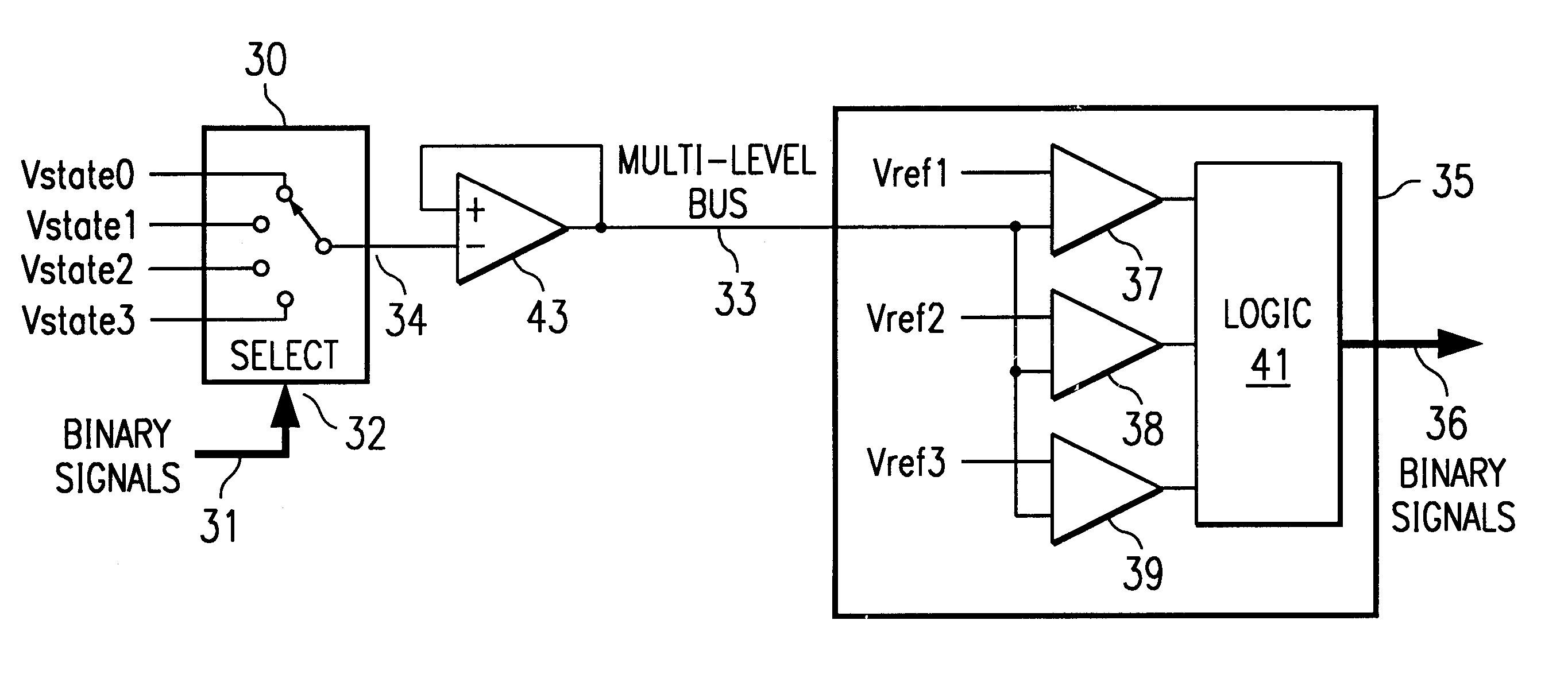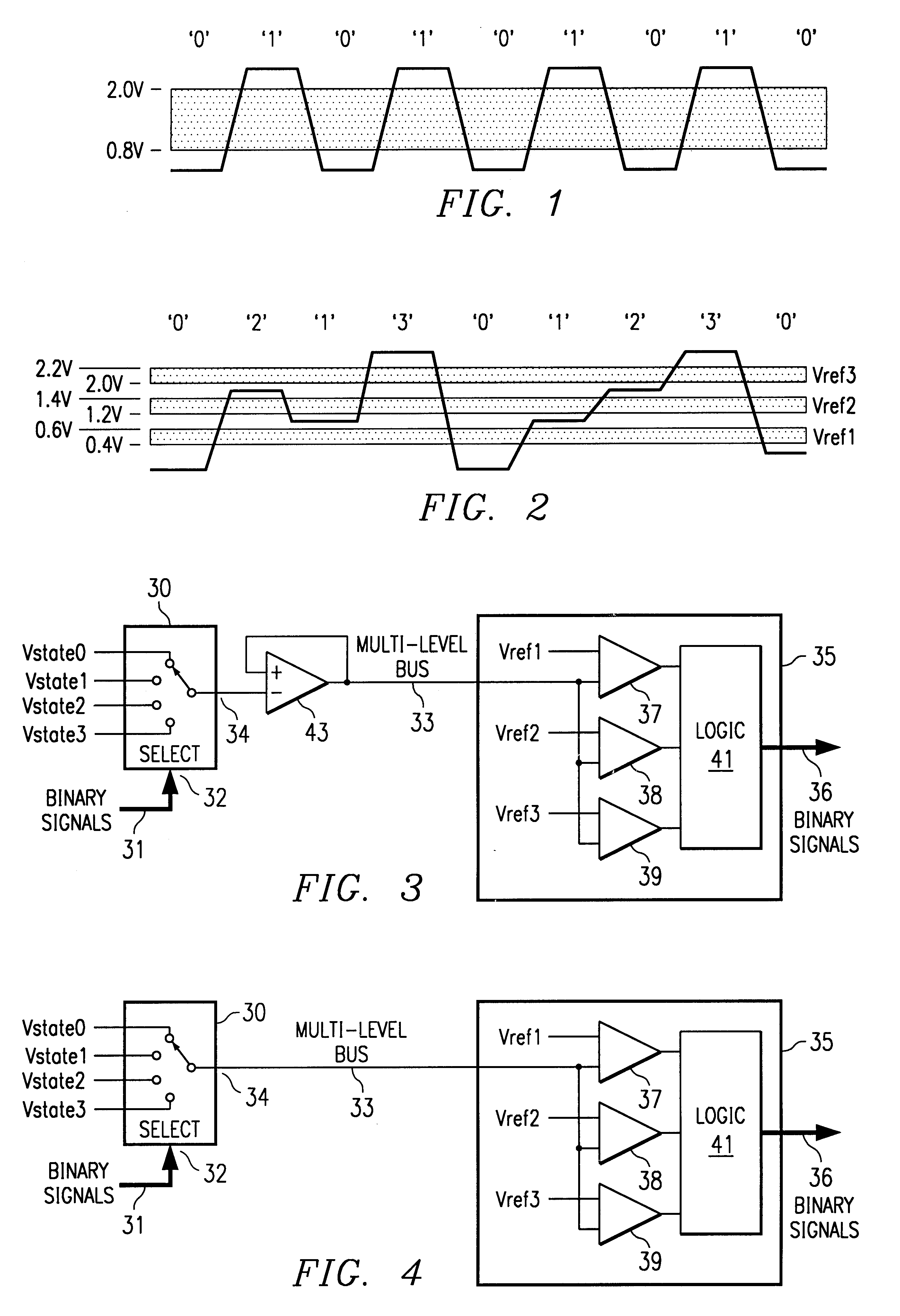Structure and method for reduction of power consumption in integrated circuit logic
a technology of integrated circuit logic and power consumption reduction, which is applied in the direction of logic circuits using specific components, logic circuit coupling/interface arrangement, pulse technique, etc., can solve the problem that the technique of reducing the operational voltage to reduce the power dissipation is approaching its physical limitations, and the operational voltage of an integrated circuit cannot be significantly reduced below 0.9 volts
- Summary
- Abstract
- Description
- Claims
- Application Information
AI Technical Summary
Problems solved by technology
Method used
Image
Examples
Embodiment Construction
As illustrated in FIG. 1, a single signal line with a single threshold can have two states "0" and "1". The conductor line is either charged above 2.0 v or discharged below 0.8 v. When the line is above 2.0 v the logic state of the line is 1. When the voltage on the line is below 0.8 v, the logic state of the line is 0. The line dissipates power in watts based upon the voltage change of 1.6 v in charging or discharging between these two logic states (ie. 0.6 v to 2.2 v). A single line can therefore transmit two logic values. In order to transmit a logic representation of four separate values in binary code (00, 01, 10, 11), two single threshold lines are needed. These two lines, by switching logic states between "0" and "1" can represent binary numbers 00, 01, 10 and 11. Table I illustrates the transition between all possible logic states, and the voltage change relative to the power dissipation for each transition, given a pair of two state conductor lines as illustrated in FIG. 1:...
PUM
 Login to View More
Login to View More Abstract
Description
Claims
Application Information
 Login to View More
Login to View More - R&D
- Intellectual Property
- Life Sciences
- Materials
- Tech Scout
- Unparalleled Data Quality
- Higher Quality Content
- 60% Fewer Hallucinations
Browse by: Latest US Patents, China's latest patents, Technical Efficacy Thesaurus, Application Domain, Technology Topic, Popular Technical Reports.
© 2025 PatSnap. All rights reserved.Legal|Privacy policy|Modern Slavery Act Transparency Statement|Sitemap|About US| Contact US: help@patsnap.com


